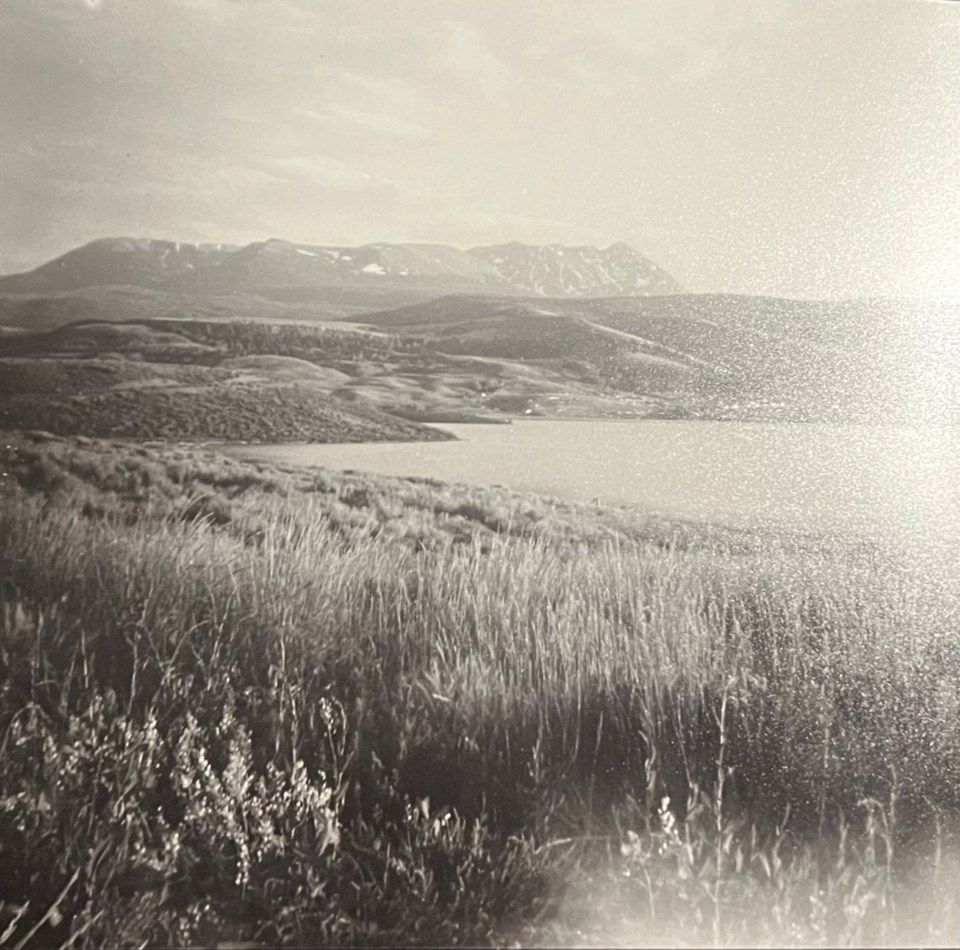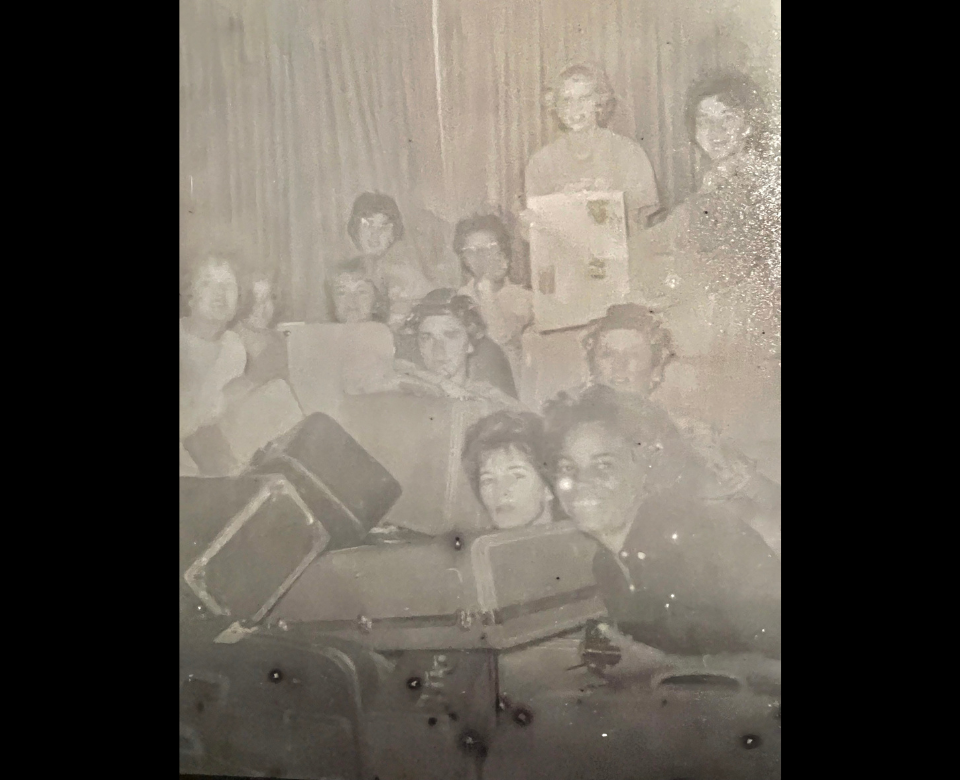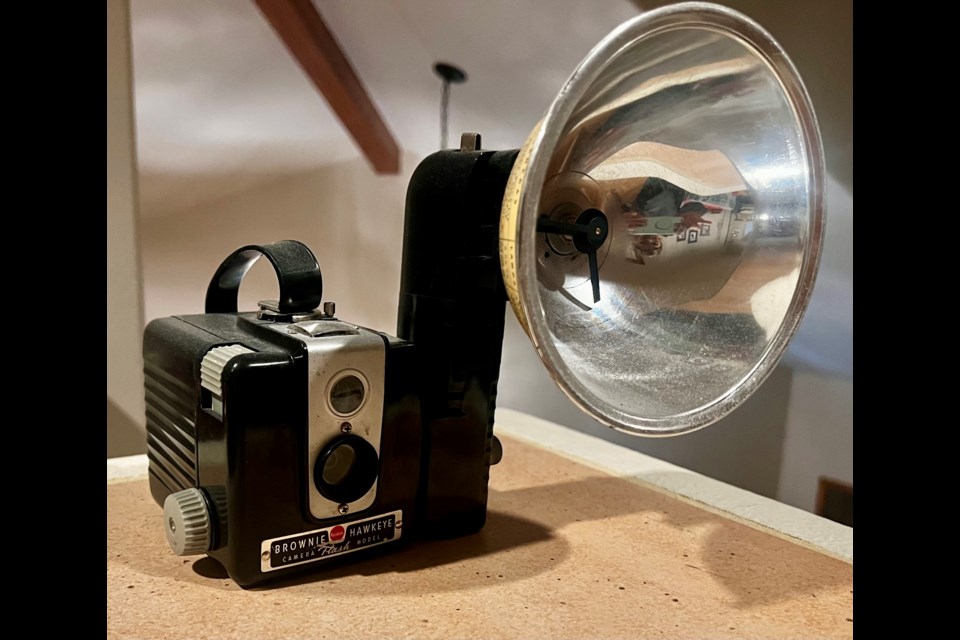Father and daughter Andrew and Violet Oliver were searching a Longmont antique shop when they stumbled upon a Brownie camera. When they opened it up the family discovered film that had never been seen before. What the pictures revealed would change the family’s appreciation of history forever.
The father-daughter duo were searching for an antique to turn into a clock when they found the camera.
When the Brownie camera made its debut in the early part of the twentieth century, it sold for only one dollar — making it accessible to the general public. According to the Franklin Institute, over 100,000 were purchased in the first year alone.
The Oliver family opened up the antique Brownie camera to insert clock parts when they discovered some film. Pondering what to do, wife and mother Lindsey Oliver decided to get the film developed.
When she received the photos she had no idea what to make of them. There were four photos in which she could recognize faces or a landscape but she didn’t know where or who these people were.
“We were completely gobsmacked that they were in as good of shape as they were. It was quite shocking,” Lindsey Oliver said. “We knew no one had ever seen these images before.”
Curious about who the people are in the photos, Lindsey Oliver posted digital copies onto her various social media accounts asking for any information.
She received some information about the landscape photo looking as though it might have been taken at Green Mountain Reservoir in Grand County, north of Silverthorne.

Her daughter took another photo that portrays a group of women — one of whom is holding a newspaper — piled together with luggage and curlers under a microscope. She discovered that the newspaper was from Colorado State University.
With all clues pointing to northern Colorado, she extended her search north. She reached out to history professors at CSU who said the photo of the women is from a significant night in CSU’s history.
In the 1960s, women who attended CSU were required to live on campus or in approved housing and to adhere to strict curfew rules. These rules required they all be back in their rooms by 11 p.m. Men in this time had no rules regarding curfew.
Vicki Hays — managing editor of the school’s newspaper “The Collegian” — was forced to work past 11 p.m. to ensure the paper made it to press the next day. After continuously missing curfew, Hays moved off campus without the permission of the university. When the school discovered what had happened it gave her the option to either move back or to be expelled, according to a 2018 article in The Collegian.
“Hays chose neither: Instead, she staged a sit-in demonstration at the Dean of Women’s Office and used The Collegian as a forum to rally student activists. She blasted the administration for accusing her of ‘squawking” and refusing to “take her medicine,’” stated The Collegian.
“‘What I stand to gain from my opposition is, at most, the permission to continue living as I am,’ Hays wrote in an editorial at the time,” The Collegian discovered.
Hays lost her appeal and later transferred to Colorado University.
Two years after Hays’ departure, on May 11, 1967 a general protest of around 2,500 people who were against the university’s exercise of authority over female students in place of their parents, a CSU historian told Lindsey Oliver via email.

The photo Lindsey Oliver discovered is of some of the women who gathered on this night in the university’s Moby Gym between 10:45 and 11:45 p.m. that night.
“As for what’s going on in the picture, I expect that the hair curlers were a prop to draw attention to fact that the women were out after what was supposed to be their bedtime. The suitcases, I think, had nothing to do with travel to anyplace away from campus. Rather they symbolized the opposite, i.e., that in the event the protesters found themselves locked out of their dorms when they returned an hour after 11 pm weeknight curfew, they could go back to Moby and further embarrass the administration by making the rest of the night into a great big pajama party,” the CSU historian wrote in an email to Lindsey Oliver.
The protest worked and the president of the university began lifting some of the rules by the end of the month, according to The Collegian.
For the Oliver family, finding these photos and researching their history has “really made history real,” Lindsey Oliver said. “It’s one think to know our history but it is another to look at the faces of the people who are in the middle of it.”
The rest of the photos remain a mystery but Lindsey Oliver said she hopes to find the family who once owned the camera and return these memories to them.



